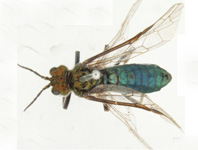Abstract
The present study deals with the morphologic variability of eight Clathria species from the southern Gulf of Mexico and Mexican Caribbean. Clathria (Clathria) foliacea, C. (C.) carteri, C. (Microciona) calla, C. (M.) echinata, C. (M.) spinosa, C. (Thalysias.) venosa, and C. (T.) virgultosa were collected by scuba diving and dredging from the southern Gulf of Mexico (Veracruz, Campeche Bank, Yucatan) to the Caribbean coast (Quintana Roo) from shoreline to 120 m depth. The population of Clathria seems to be neither abundant nor diverse in the studied area. However, the seven species considered here are presumed to have a slight morphologic variability, and the interspecific relationships had not been fully resolved. The present study focuses on their differentiation through comparison of external morphology, skeletal architecture, spiculation and measurements of characters as well as scanning electronic microscopy.
Comparisons were made among intra- and interspecific material and with the available type material. In particular, C. carteri Topsent (1889), previously synonymized with C. foliacea, is resurrected by establishing a neotype from material from the type locality, Campeche Bank; this has not been studied since its original description and is here redescribed for the first time. Another neotype is assigned for C. foliacea from Campeche also, since the original material is no longer available, and this species is redescribed also. Significant differences in spiculation between C. foliacea and C. carteri were found by one-way ANOVA. Although C. (T.) venosa resembles C. (T.) raraechelae in spiculation, these two species differ in measurements and skeletal organization. C. (T.) virgultosa is typified by a peculiar acanthostyle that is markedly spined on distal parts of the shaft, and by two types of tiny microscleres. This study has extended the known geographic distribution of each of these Clathria spp. within the lower Gulf of Mexico.

